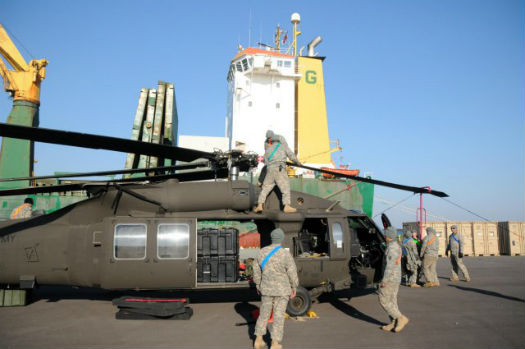
<style> <!– /* Font Definitions */ @font-face {font-family:”MS 明朝”; mso-font-charset:78; mso-generic-font-family:auto; mso-font-pitch:variable; mso-font-signature:1 134676480 16 0 131072 0;} @font-face {font-family:”MS 明朝”; mso-font-charset:78; mso-generic-font-family:auto; mso-font-pitch:variable; mso-font-signature:1 134676480 16 0 131072 0;} @font-face {font-family:Cambria; panose-1:2 4 5 3 5 4 6 3 2 4; mso-font-charset:0; mso-generic-font-family:auto; mso-font-pitch:variable; mso-font-signature:-536870145 1073743103 0 0 415 0;} /* Style Definitions */ p.MsoNormal, li.MsoNormal, div.MsoNormal {mso-style-unhide:no; mso-style-qformat:yes; mso-style-parent:””; margin:0in; margin-bottom:.0001pt; mso-pagination:widow-orphan; font-size:12.0pt; font-family:Cambria; mso-ascii-font-family:Cambria; mso-ascii-theme-font:minor-latin; mso-fareast-font-family:”MS 明朝”; mso-fareast-theme-font:minor-fareast; mso-hansi-font-family:Cambria; mso-hansi-theme-font:minor-latin; mso-bidi-font-family:”Times New Roman”; mso-bidi-theme-font:minor-bidi;} .MsoChpDefault {mso-style-type:export-only; mso-default-props:yes; font-family:Cambria; mso-ascii-font-family:Cambria; mso-ascii-theme-font:minor-latin; mso-fareast-font-family:”MS 明朝”; mso-fareast-theme-font:minor-fareast; mso-hansi-font-family:Cambria; mso-hansi-theme-font:minor-latin; mso-bidi-font-family:”Times New Roman”; mso-bidi-theme-font:minor-bidi;} @page WordSection1 {size:8.5in 11.0in; margin:1.0in 1.25in 1.0in 1.25in; mso-header-margin:.5in; mso-footer-margin:.5in; mso-paper-source:0;} div.WordSection1 {page:WordSection1;} –> </style> U.S. Army Soldiers from the 25th Combat Aviation Regiment, Wheeler Field, Hawaii, reposition rotor blades of a UH-60 Black Hawk helicopter after being offloaded on Oct. 23, 2014. The aircraft are being transported to Camp Higashi-Chitose, Japan, for be used during exercise Orient Shield 14. Soldiers from the 2nd Stryker Brigade Combat Team, 2nd Infantry Division from Joint Base Lewis-McChord, Wash., and 3rd Battalion, 25th Combat Aviation Regiment from Wheeler Field, are participating in an annual bilateral field and staff training exercise, co-hosted by the Japan Ground Self-Defense Force and U.S. Army Japan, Oct. 27 to Nov. 7. Orient Shield 14 brings together the 2nd Stryker Brigade Combat Team, 2nd Infantry Division from Joint Base Lewis-McChord, Wash., and JGSDF members from the 11th Infantry Regiment, 7th Armor Division, Northern Army for combined light infantry, squad-level and urban assault training. Sgt. Jeremy Bratt Photo
Moving nearly 21 billion pounds of military equipment more than 11,000 nautical miles is a daunting task, but Orient Shield 14 transportation mobility warrant officers make it look seamless.
The equipment will be used by Soldiers from the 2nd Stryker Brigade Combat Team, 2nd Infantry Division, from Joint Base Lewis-McChord, Washington, and 3rd Battalion, 25th Aviation Regiment from Wheeler Field, Hawaii, participating in Orient Shield 14 in Japan. Orient Shield is an annual bilateral field training exercise conducted with Japan Ground Self-Defense Force members from the 11th Infantry Regiment, 7th Armor Division, Northern Army.
Before the exercise can begin, each equipment item has to be properly labeled, accounted for and manifested before being loaded onto a vessel. On the receiving end, each item is processed through a specific tracking system as it is off loaded, and the process of moving each item takes over.
“There is a huge number of moving parts, but when done correctly, it looks like a smooth operation,” said Chief Warrant Officer 2 Sharina Clark, a mobility warrant officer for the 3rd Battalion, 25th Aviation Regiment.
“All of these little pieces can become big problems, if not done properly,” Clark emphasized.
The pieces Clark casually refers to are the multitude of steps required to ship each of the 270 pieces of air and surface equipment cargo, which include 20 Stryker fighting vehicles and 11 helicopters, as well as numerous equipment containers filled with weapons, ammunition and a variety of military gear for nearly 700 U.S. Army Soldiers.
Watching over the entire process is Chief Warrant Officer 3 Lucia Cantu, who is serving as 2nd Stryker Brigade Combat Team transportation mobility warrant officer for Orient Shield 14.
Cantu and her team remain in constant communication with all parties from the receiving point at Shiraoi Port, to three different delivery locations in Hokkaido, Japan.
“We track each item through the transit process. We know when it left the port and when it arrives at its final location,” Cantu explained.
This process is repeated over and over until the roughly nine billion metric tons of equipment is safely delivered to its customer.
According to Cantu, each country has different requirements and procedures. Whether it’s clearing Japan customs, or something as simple as researching the differences in transport vehicle makeup, these differences can cause a delay in moving equipment.
In the U.S., a “lowboy” is a flat-bed trailer that can be loaded by driving a vehicle onto it. In Japan it’s also called a lowboy, but equipment has to be loaded using a crane. This means coordinating in advance to have a crane and operator available, Cantu explained.
“It may not seem like a big deal, until you’re sitting on a dock and can’t move your inventory. It’s little things like this that can make a huge difference in getting the job done,” Cantu emphasized.
“The key is to forecast requirements, ensure proper planning is conducted, avoid making assumptions based on U.S. practices and being able to adjust as needed,” Cantu said.
“We’ve been doing this long enough that we can plan for the unexpected, but it’s mostly about teamwork and being flexible,” Cantu said.
Cantu attributes the success of this mission to the partnership and working relationship that has developed between the Military Sealift Command’s 836th Transportation Battalion from Yokohama, Japan, the Installation Transportation Office and the Port team, made up of roughly two-dozen Soldiers from the 2nd Stryker Brigade and the 25th Aviation Regiment.
“This is the first time we have combined air and ground equipment, so it has been a balancing act for us to be able to quickly meet the needs of both customers. This was truly a team effort,” Cantu said.
“This was a huge undertaking and Chief Cantu and her team did an exceptional job,” said Frederick “Bo” Ellis, lead exercise planner for U.S. Army Japan. “She brought the experience and expertise to make all this happen.”









